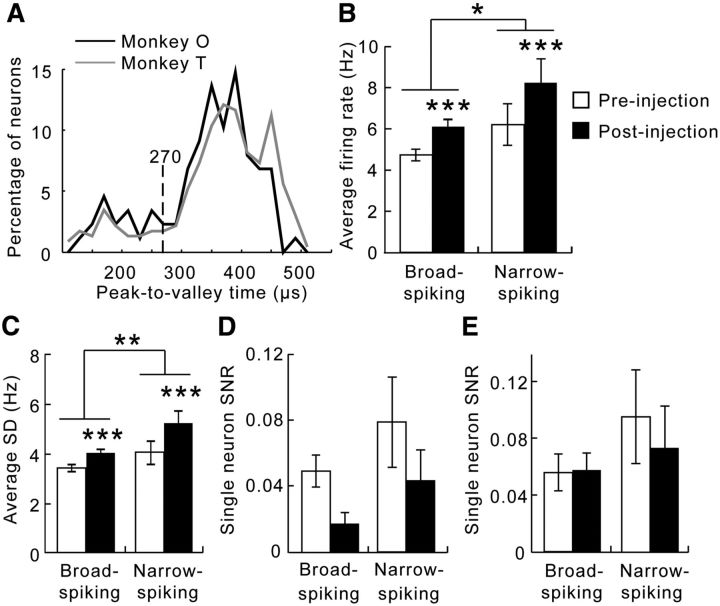Figure 7.
Ketamine exerted similar effects on the activities of different types of neurons. A, Neurons were classified into two categories: broad-spiking and narrow-spiking neurons based on the bimodal distribution of the peak-to-valley latencies. Neurons recorded from both subjects had similar peak-to-valley latency distributions. B, Although the NSNs (right bars) fired at high rates than the BSNs (left bars), both types of neurons showed an increase in activity level after ketamine injection (open vs filled bars). C, Overall, the NSNs (right bars) fired with greater trial-to-trial variance than the BSNs (left bars). Ketamine increased this variance in both types of neurons (open vs filled bars). There was no interaction between treatment and neuron type. D, The SNR for rules across all trials, including errors, calculated the same way as in Figure 3B, was reduced by ketamine across both types of neurons. E, On correct trials only, the SNR did not change after ketamine injection (empty vs filled bars), nor did it differ between neuron types (left vs right bars). Error bars indicate the SEM. *p < 0.05, **p < 0.005, ***p < 0.0001.

